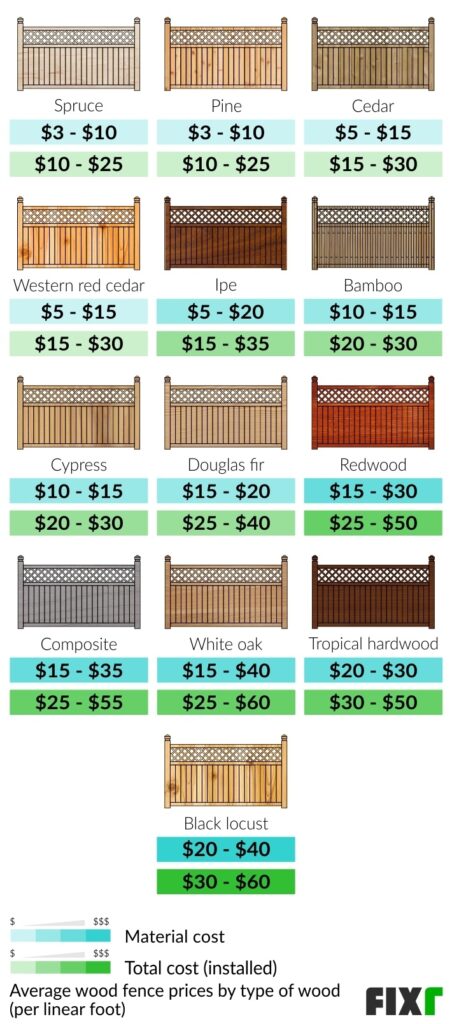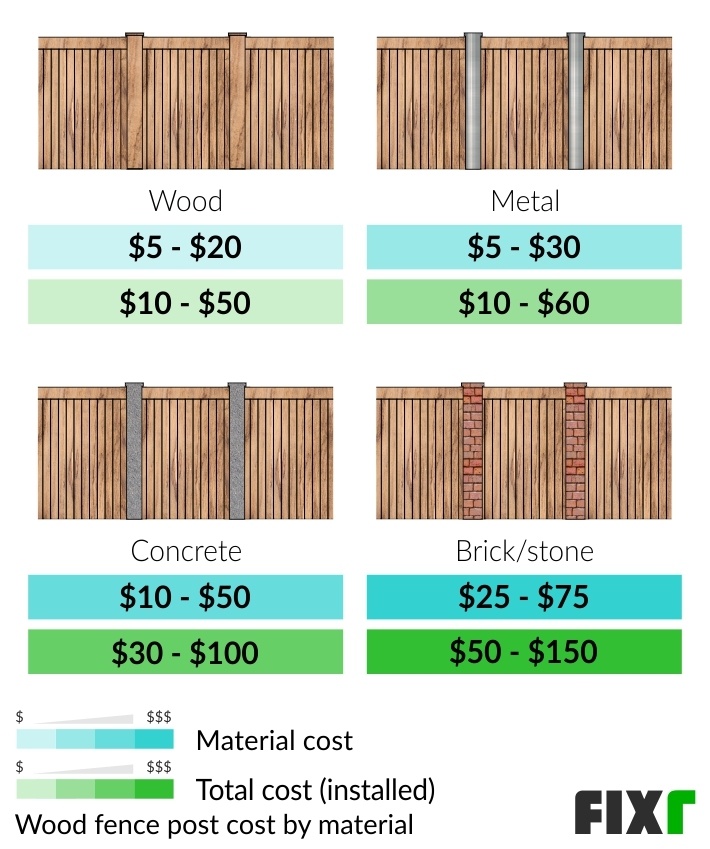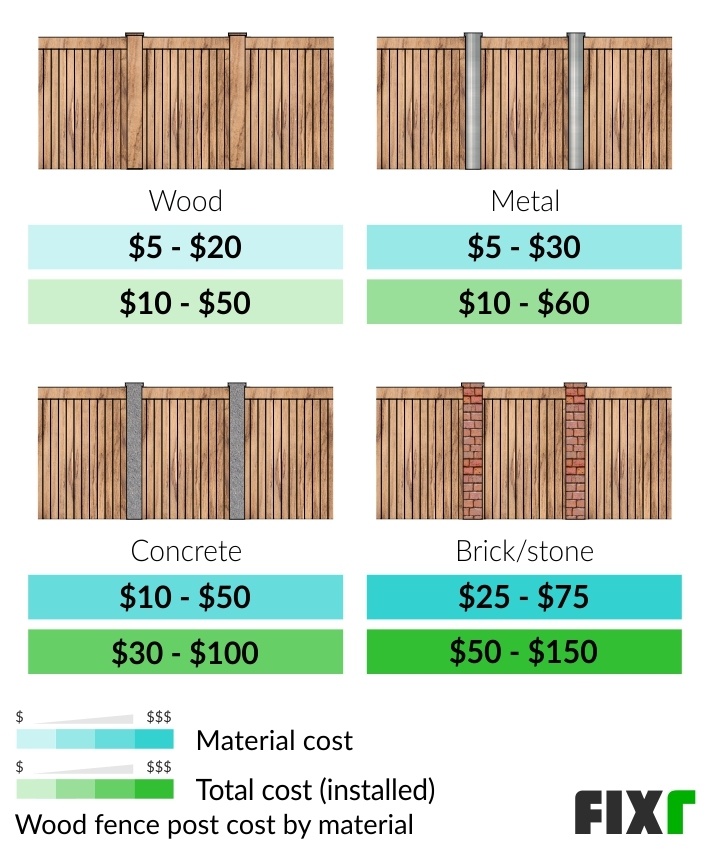In my article titled “The Cost Factors of Different Fence Types,” you will learn about the various aspects of fences such as their types, sizes, shapes, and materials. I aim to provide you with reliable information and practical advice to guide you in selecting and installing the right fence for your specific needs or requirements.
I will delve into the characteristics and advantages of different fence types, including wooden fences, chain-link fences, vinyl fences, and metal fences. We will discuss their durability, maintenance requirements, and aesthetic appeal to help you make an informed decision. Additionally, I will address the importance of choosing the appropriate size and shape of a fence based on factors like property size, desired level of enclosure, and architectural considerations.
For each post, I will provide a comprehensive list of 10 commonly asked questions about fences, along with their answers, to further assist you in understanding the topic. By covering a wide range of fence types, sizes, shapes, and materials, my goal is to provide you with valuable knowledge and practical advice so that you can make the best choice for your fencing needs.
The Cost Factors of Different Fence Types
Fences are not only functional but also contribute to the overall aesthetic appeal of your property. With a variety of fence types available in the market, it’s important to consider the cost factors associated with each option. In this article, we will explore different fence types and discuss the cost implications of each, helping you make an informed decision based on your budget and needs.

Overview of Fence Types
Wooden Fences
Wooden fences are a popular choice due to their traditional and natural look. They are available in various styles, including picket, privacy, and split rail fences. The cost of wooden fences can vary depending on the type of wood used, the height and length of the fence, and any customization options.
Chain-Link Fences
Chain-link fences are known for their durability and affordability. They are commonly used for securing properties and are available in different gauges, with thicker gauges being more expensive. The cost of a chain-link fence is determined by the height, length, and quality of the materials used.
Vinyl Fences
Vinyl fences are low-maintenance and come in a wide range of styles, colors, and textures. Although they can be more expensive upfront compared to other options, their long-lasting nature and minimal maintenance requirements make them cost-effective in the long run.
Metal Fences
Metal fences, such as aluminum and steel, are known for their strength and security features. They are available in various designs and can be customized to suit your preferences. The cost of metal fences depends on the type of metal used, the height and length of the fence, and any additional features.
Composite Fences
Composite fences are a combination of wood fibers and recycled plastic, offering the look of wood with the durability of plastic. They are resistant to rot, insects, and warping, making them a long-lasting and cost-effective option.
Picket Fences
Picket fences are often associated with traditional American-style homes and are available in different materials such as wood, vinyl, or metal. The cost of a picket fence varies based on the material used and the height and length of the fence.
Privacy Fences
Privacy fences are designed to provide privacy and security to your property. They are available in various materials, including wood, vinyl, and composite. The cost of a privacy fence depends on the material used, the height and length of the fence, and any additional features like lattice tops or decorative elements.
Farm Fences
Farm fences serve the purpose of enclosing livestock and agricultural areas. They can be made of wood, wire, or vinyl and the cost is determined by the type of material used, the length and height of the fence, and any specific requirements for containing different types of livestock.
Pool Fences
Pool fences are necessary to ensure safety and compliance with regulations. They are available in different materials, including aluminum, vinyl, and wrought iron. The cost of a pool fence depends on the material used, the height and length of the fence, and any specific requirements set by local regulations.
Garden Fences
Garden fences are used to protect plants and add a decorative element to your garden. They can be made of wood, metal, vinyl, or composite materials. The cost of a garden fence is determined by the material used, the height and length of the fence, and any additional features like ornate designs or gates.
Electric Fences
Electric fences are primarily used to control animal movement and are commonly used in agricultural settings. The cost of an electric fence depends on the type of electric fencing system used, the length of the fence, and any specific requirements for containing different types of livestock.
Bamboo Fences
Bamboo fences offer a combination of aesthetics and sustainability. They provide a natural and eco-friendly option for enclosing your property. The cost of a bamboo fence depends on the height and length of the fence, the quality of the bamboo used, and any additional customization options.
Wrought Iron Fences
Wrought iron fences are known for their elegance and durability. They can be customized to fit different architectural styles and are often used for decorative purposes. The cost of a wrought iron fence is determined by the height and length of the fence and any specific design requirements.
Split Rail Fences
Split rail fences are a classic and rustic option for enclosing properties, especially in rural areas. They are typically made of wood or vinyl and offer a cost-effective solution for large areas. The cost of a split rail fence depends on the material used and the length of the fence.

Characteristics and Advantages of Wooden Fences
Wooden fences are a popular choice for homeowners due to their natural and timeless appeal. Let’s explore the characteristics and advantages of wooden fences to help you understand why they might be the right option for your property.
Durability and Longevity
Wooden fences, when properly maintained, can last for several years. The durability of a wooden fence depends on the type of wood used and the treatment applied to it. Woods like cedar and redwood are naturally resistant to rot and decay, making them excellent choices for outdoor structures.
Aesthetics and Customization Options
Wooden fences add a warm and inviting look to any property. They can be easily customized to match the style and architecture of your home. Whether you prefer a classic picket fence or a tall privacy fence, wooden fences offer a wide range of design options to suit your preferences.
Environmental Impact
Wooden fences are made from a renewable resource, making them an environmentally friendly choice. Using sustainably sourced wood or reclaimed wood for your fence can further reduce the environmental impact.
Cost Factors
The cost of a wooden fence can vary depending on several factors, including the type of wood used, the height and length of the fence, and any customization options. More expensive wood species, such as cedar or redwood, will increase the cost of the fence. Additionally, if you choose to have a taller fence or require any decorative elements, it will impact the overall cost.
Maintenance Requirements
Wooden fences require regular maintenance to ensure their longevity. This includes painting or staining the wood to protect it from moisture and applying a sealant to prevent rot and insect damage. Ongoing maintenance costs should be considered when evaluating the total cost of a wooden fence.
Privacy and Security Features
Wooden fences can provide both privacy and security to your property. Higher and solid fence designs offer more privacy, while picket fences allow for visibility while still providing a barrier. Gates and locks can also be added to enhance security.
Common Uses
Wooden fences are commonly used for a variety of purposes, including defining property boundaries, enclosing backyard spaces, providing privacy, and adding a decorative element to the landscape. They are suitable for both residential and commercial properties.
Common Wood Species for Fencing
Various wood species can be used for building wooden fences, each with its own distinct characteristics and costs. The most common wood species used for fencing include:
-
Cedar: Cedar is a popular choice due to its natural resistance to rot, decay, and insects. It has a warm, reddish-brown color and weathers gracefully over time. Cedar fences are typically more expensive than other wood options but offer exceptional durability.
-
Redwood: Redwood is another top choice for wooden fences. It is naturally resistant to rot and insects and has a beautiful reddish color. Redwood fences are known for their longevity but can be costly.
-
Pine: Pine is a popular and cost-effective option for wooden fences. It is widely available and easy to work with, but it requires regular maintenance to protect it from rot and decay.
-
Spruce: Spruce is a commonly used wood for fences due to its affordability. It is a softer wood, so it may be more prone to damage and decay over time compared to other hardwoods.
-
Fir: Fir is a strong and durable wood that is commonly used for fences. It offers good resistance to rot and decay. Fir fences are generally more affordable than cedar or redwood.
-
Cypress: Cypress is a naturally durable wood that is resistant to rot and insects. It has a distinct light color that weathers to a grayish tone over time. Cypress fences are more expensive but provide excellent durability.
-
Pressure-Treated Wood: Pressure-treated wood is commonly used for outdoor structures, including fences. It is treated with chemicals to make it resistant to rot, decay, and insects. Pressure-treated wood is affordable but requires regular maintenance to maintain its appearance and integrity.
FAQ
-
What is the average cost of a wooden fence?
- The average cost of a wooden fence can vary depending on factors such as the type of wood used, the height and length of the fence, and any customization options. On average, homeowners can expect to spend between $1,500 and $4,000 for a wooden fence installation.
-
How long do wooden fences typically last?
- The lifespan of a wooden fence depends on various factors, including the type of wood used, maintenance, and exposure to weather conditions. Generally, a well-maintained wooden fence can last between 15 to 20 years.
-
Are wooden fences easy to repair?
- Wooden fences can be relatively easy to repair, depending on the extent of the damage. Small repairs, such as replacing a few boards or realigning a gate, can often be done by homeowners themselves. However, major repairs may require professional assistance.
-
Do wooden fences require a lot of maintenance?
- Wooden fences do require regular maintenance to keep them looking their best and ensure their longevity. This includes painting or staining the wood to protect it from moisture and applying a sealant. Additionally, regular inspections should be conducted to identify any damage or rot that may require repairs.
-
Can wooden fences be customized?
- Yes, wooden fences offer a high level of customization. They can be built in various styles, including picket fences, privacy fences, and split rail fences. Different design elements, such as lattice tops or decorative posts, can also be added to suit your preferences.
-
How can I make my wooden fence last longer?
- To make your wooden fence last longer, it’s important to properly maintain it. This includes regularly inspecting for any damage or rot, cleaning the fence, and applying a protective finish or sealant as recommended by the manufacturer. Trimming any vegetation near the fence can also help prevent moisture buildup.
-
Are wooden fences environmentally friendly?
- Wooden fences can be considered environmentally friendly, especially when using sustainably sourced wood or reclaimed wood. Wood is a renewable resource, and using it for fencing purposes helps reduce the demand for other non-renewable materials.
-
Can wooden fences provide privacy and security?
- Yes, wooden fences can provide both privacy and security. Solid panel designs or taller fences offer more privacy, while adding features like gates and locks can enhance security.
-
Are there any alternatives to wooden fences?
- Yes, there are several alternatives to wooden fences, including vinyl, metal, composite, and bamboo fences. Each alternative has its own advantages and cost factors to consider.
-
Can I install a wooden fence myself?
- Installing a wooden fence yourself is possible if you have the necessary tools and skills. However, it’s important to research and understand the process thoroughly to ensure the fence is installed correctly and securely.
| Fence Type | Average Cost per Foot (Materials Only) |
|---|---|
| Wooden Fence | $10 – $30 (depending on wood species) |
| Chain-Link Fence | $5 – $15 |
| Vinyl Fence | $20 – $40 |
| Metal Fence | $25 – $60 (depending on metal type) |
| Composite Fence | $25 – $60 (depending on material) |
| Picket Fence | $10 – $40 (depending on material) |
| Privacy Fence | $20 – $50 (depending on material) |
| Farm Fence | $5 – $15 (depending on material) |
| Pool Fence | $20 – $40 (depending on material) |
| Garden Fence | $10 – $30 (depending on material) |
| Electric Fence | $1 – $3 per foot (electric system not included) |
| Bamboo Fence | $15 – $30 (depending on quality) |
| Wrought Iron Fence | $25 – $80 (depending on design and metal type) |
| Split Rail Fence | $10 – $20 (depending on material) |
In conclusion, when considering the cost factors of different fence types, it’s important to evaluate not only the initial investment but also long-term maintenance requirements and the desired lifespan of the fence. Wooden fences offer a classic and customizable option, but they require regular maintenance. Chain-link fences provide durability and affordability, while vinyl fences offer low maintenance and aesthetics. Metal and composite fences provide strength and longevity with customization options. Picket fences add a traditional touch, while privacy fences ensure security and seclusion. Farm, pool, garden, electric, bamboo, and wrought iron fences cater to specific needs and preferences. By understanding the cost factors and advantages of each fence type, you can make an informed decision that suits your budget and requirements.

